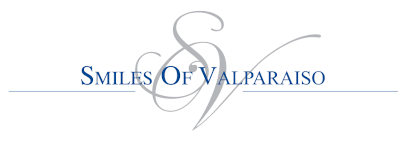Digital Radiography Becomes Prominent In Dentistry

Question: “What is the difference between regular dental x-rays and “computer” x-rays?”
Answer: I think that you are probably referring to paper x-rays and digital x-rays, and I will answer your question based upon that assumption. Both methods are very effective for gathering diagnostic information. Traditional x-rays have been utilized effectively for many decades. Digital radiography is a much newer technology that is being used by more dentists every year.
Digital radiography systems utilize a small “sensor” that is positioned briefly inside your mouth and acts like a miniature camera that is sensitive to x-rays instead of light. A highly detailed image is translated almost instantaneously onto a computer screen for evaluation. This saves a great deal of time (five to ten minutes) and is environmentally friendly because there is no need for the chemicals used to develop traditional radiographs.

These images are much larger and easier for the dentist and patient to view simultaneously and can improve communication tremendously. With advanced software, it shares similar advantages of other digitized images. These include the ability to magnify, rotate, adjust for contrast, and even color-code for educational purposes. These images are stored easily and conveniently in each patient’s computer file, which eliminates the “wear and tear” of small, traditional “films.”
I also get asked about radiation exposure on a regular basis because most people are concerned about limiting this as much as possible. The good news is that dentists are equally concerned about this and are trained to follow the ALARA principle when it comes to dental x-rays. ALARA is an acronym for “as low as reasonably achievable.”
This means that dentists take the fewest number of radiographs (dental x-rays) necessary to make proper diagnoses at your dental appointments. There are guidelines for the number and types of radiographs that should be taken on a regular basis. Additional radiographs are often necessary when there is a problem.
Over the past few decades, the amount of exposure needed to get a radiograph of diagnostic quality has decreased tremendously. That means that each x-ray taken has a fraction of the radiation of x-rays from thirty years ago. Additionally, the newer digital radiography systems can decrease exposure by up to another eighty percent, while offering dentists excellent diagnostic ability.
Digital images can simply be printed or e-mailed any number of times for communication with insurance companies, specialists, or patients. It is also easier to compare images from previous appointments to detect any changes that have occurred over time.
Digital radiography decreases radiation exposure to patients, it is faster, and it improves diagnostic ability. It has the potential to improve communication, images are easily stored, and software enables us to enhance these images immensely. With all of these obvious advantages, I anticipate that the majority of dental offices will be using digital radiography within the next few years.
